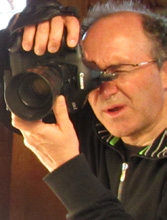By Jean-Denis Boillat
“My daily challenge is to create photographs that reflect the vision of my clients, and I specialize in advertising and commercial photography of a wide variety of subjects. While my approach has remained the same, the role of the image has evolved over the course of time. At the beginning of my career, my emphasis was on the detail shown in the subject, today it is the ambiance of the scene – the feeling that the photograph generates in the mind of the viewer – that is what sells the product.
Food photography remains a balance between these two approaches. The detail and texture of food is just as important as the environment in which one integrates a dish to produce a tantalizing image. The assignment shown here illustrates the photo session for a new book of recipes published by Minçavi.”
For still-life images of food, is there any special preparation for the product to protect it from temperature and other conditions in the studio?
“Not really. In fact, in my routine of capturing the images, I make sure to place my lighting and to choose my sets before laying out the products. I carry out tests before I call for the food to be brought out of the kitchen. It is only then that the dish is placed on the set. On this assignment, we only used meals that were exactly as they would be prepared by the readers of the book – the time required for the photo session was reduced, compared to what it might have been for a restaurant menu photo assignment.”
 How long can you work with an item before it has to be “refreshed” or replaced?
How long can you work with an item before it has to be “refreshed” or replaced?
“That depends on the product. A sauce, for example, tends to solidify while cooling, as does all food which contains fat; the pâtes dry, become dull; mousse will liquify when warmed.
If one has five minutes to work with a conventional dish, a mousse will be at its best for only a matter of seconds. It is very much a question of being ready. In most cases, one keeps several plates in reserve and cold. On the other hand, pastry made without cream and mousse does not deteriorate with ambient heat.”
Do you use artificial replicas of menu items?
“The challenge is to show the recipes in such a way as they can be reproduced. It is essential to work with the natural products. The image must present a dish from a realistic perspective. The nobility of natural food takes precedence over the cosmetic characteristics. It is a tendency which is observed more and more.
There are a few exemptions which are tolerated in this type of photography – for example, to make a meat entrée glisten, you might spray a little oil on it, but there are things that you just do not do – like mixing certain foods (shrimps in a salad) in order to preserve their color and their properties. If need be, we “help” the product. The chocolate, for example, is matte finished.
Often, the customer wants a chocolate glossed, with beautiful reflections of lights. In that case, it is usually enough to slightly heat it with a hair-drier and the matte surface glosses itself. One then has about fifteen seconds to take the images. For ice cream, it is more aesthetic to see some drops melting and dripping on the plate. One can control the phenomenon by using a very cold ball of ice cream, and heating parts of it by blowing with a straw at precise places. Other than these examples, we do not use any artificial simulation of the product.”
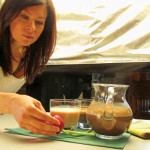 Is there a chef on-site to assist with the preparation of the subject, and advise on the camera angles, and appropriate accompanying props – (wine glasses filled with red or white, appropriate cutlery, table settings, candles, etc.).
Is there a chef on-site to assist with the preparation of the subject, and advise on the camera angles, and appropriate accompanying props – (wine glasses filled with red or white, appropriate cutlery, table settings, candles, etc.).
“Food photography is above all a matter of teamwork. The chef brings his knowledge and his mastery of food to present the meal in the best possible manner, assuring an ideal preparation time to sublimate the textures, colours, and subtle nuances of the meal. The chef is also the final judge of the way the food is presented on the plate.
The balance between the dish and the environment is entrusted to a designer who arranges the accessories, with an eye on the colours and basic textures. This effort harmonizes the meal with the environment.
Finally, we work in collaboration with the graphic designer in order to correlate the whole assignment. We all work on complementary aspects of the project, and each one contributes to the end result.”
Is there a special approach to the perspective that you use for food photography – for example, is it preferable to show the food from the perspective of a person sitting at a dinner table, ready to enjoy the meal?
“Very often, people are not conscious of this aspect of the image. On the other hand, if you present two images photographed from different perspectives, one realizes that the more one moves away from the product, the more that image becomes descriptive, and the visual information is generalized. By presenting an image of food from a closer perspective, one allows the product to occupy a more important place within the image. It is this second approach which is displayed in this assignment. It is the food that is the “star of the show”.
How do you set up your working area – backdrop, tripod, lights, reflectors – how many different lighting arrangements do you shoot for each subject?
How large an area do you need to shoot this type of image? “The set is created using samples of ceramics, wood, and laminates, and comprises both the support surface and the backdrop. I build this on a table approximately two feet by four feet. I use, as my basic lighting arrangement, two light boxes and two lights equipped with gobos to control the reflections of light on the dish and to create the basic environment. Ithe plate. One can control the phenomenon by using a very cold ball of ice cream, and heating parts of it by blowing with a straw at precise places.
Other than these examples, we do not use any artificial simulation of the product.”
Is there a chef on-site to assist with the preparation of the subject, and advise on the camera angles, and appropriate accompanying props – (wine glasses filled with red or white, appropriate cutlery, table settings, candles, etc.).
“Food photography is above all a matter of teamwork. The chef brings his knowledge and his mastery of food to present the meal in the best possible manner, assuring an ideal preparation time to sublimate the textures, colours, and subtle nuances of the meal. The chef is also the final judge of the way the food is presented on the plate.
The balance between the dish and the environment is entrusted to a designer who arranges the accessories, with an eye on the colours and basic textures. This effort harmonizes the meal with the environment.
Finally, we work in collaboration with the graphic designer in order to correlate the whole assignment. We all work on complementary aspects of the project, and each one contributes to the end result.”
Is there a special approach to the perspective that you use for food photography – for example, is it preferable to show the food from the perspective of a person sitting at a dinner table, ready to enjoy the meal?
“Very often, people are not conscious of this aspect of the image. On the other hand, if you present two images photographed from different perspectives, one realizes that the more one moves away from the product, the more that image becomes descriptive, and the visual information is generalized. By presenting an image of food from a closer perspective, one allows the product to occupy a more important place within the image. It is this second approach which is displayed in this assignment. It is the food that is the “star of the show”.
 How do you set up your working area – backdrop, tripod, lights, reflectors – how many different lighting arrangements do you shoot for each subject? How large an area do you need to shoot this type of image?
How do you set up your working area – backdrop, tripod, lights, reflectors – how many different lighting arrangements do you shoot for each subject? How large an area do you need to shoot this type of image?
“The set is created using samples of ceramics, wood, and laminates, and comprises both the support surface and the backdrop. I build this on a table approximately two feet by four feet. I use, as my basic lighting arrangement, two light boxes and two lights equipped with gobos to control the reflections of light on the dish and to create the basic environment. Ialso use reflectors to soften the shadows and to sculpt the image while directing the light in order to give depth and to show the characteristics of the food, such as the texture and volume. I use a tripod for most of the images, but I also shoot hand-held.
Once I have the lighting set-up for the assignment, I rarely change the position or the settings of the lights, but I modify and fine-tune the light with the reflectors, and I work with the camera hand-held to change the angle of view.
The total space which I need is of approximately ten feet by ten feet. For this assignment, I assembled a studio in the restaurant of the chef. It was more practical than transporting the food to my studio.”
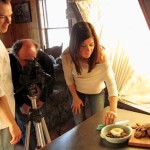 What are your basic settings for aperture, ISO, light balance? Do you bracket exposures?
What are your basic settings for aperture, ISO, light balance? Do you bracket exposures?
“I put the emphasis on the reading of light in the scene. I work at ISO 200, with aperture settings of f/8 or f/11. But I adapt to the need. The balance of light begins with a profile that I calibrate according to the environment, then I use a Macbeth color chart. The fine tuning of the colour is adjusted based on experience and judgement.”
One would assume that you shoot in RAW format and custom process each shot – do you match the colour in your image to a sample of the food?
“Indeed. I work in RAW format. The calibration of colour is done in post-production, using a profile which I created with the Macbeth colour chart.”
Food photography is a growing specialty in Canada – are there courses that focus on the subject?
“Not that I know of, although more and more photographers are specializing in this genre. Food photography would be considered “basic training” in a well-rounded photography course, with advanced skills acquired in the studio, through experience, just like the mastery of light. However, I am convinced that food photography is a team effort which achieves excellence in the art of capturing the image, the preparation of a dish and the harmonization and the balance of its environment.”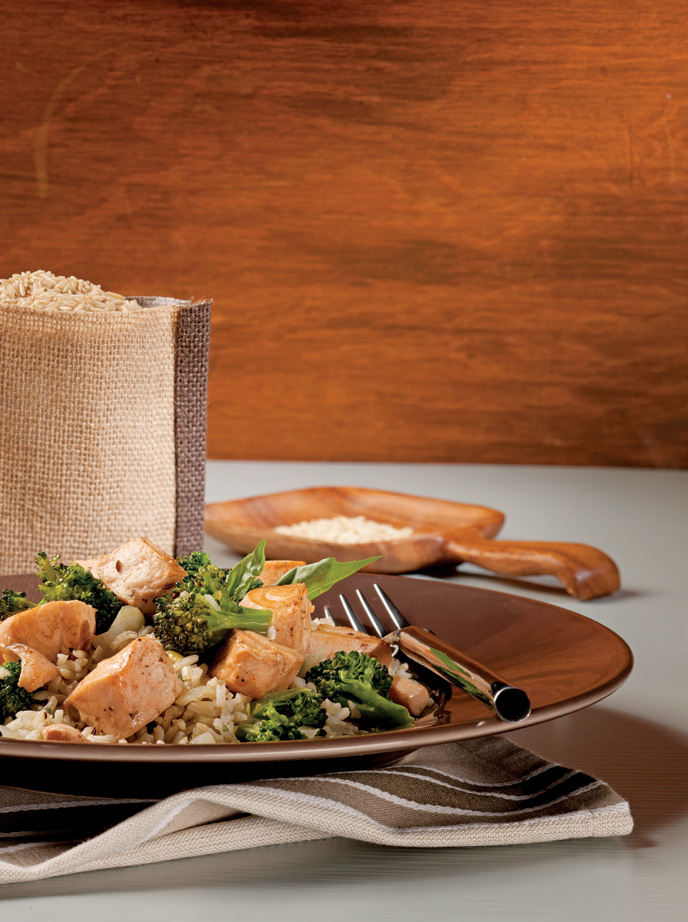
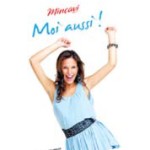 The photographs of food featured in this article were created by François laliberté for the book “Minçavi, moi aussi!” (www.mincavi.com). The photos of the artists at work were taken by Jean-Denis Boillat.
The photographs of food featured in this article were created by François laliberté for the book “Minçavi, moi aussi!” (www.mincavi.com). The photos of the artists at work were taken by Jean-Denis Boillat.
Hungry for more photographic masterpieces of the culinary arts? Enjoy the images of François Laliberté at his website: www.studioimagicom.com.




